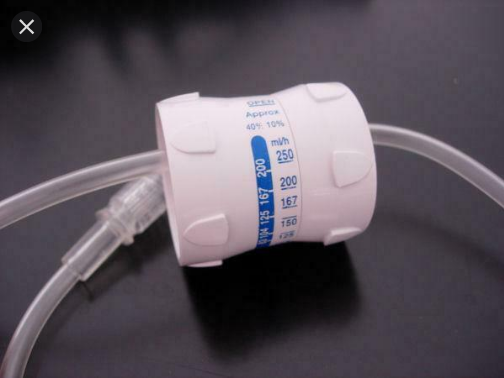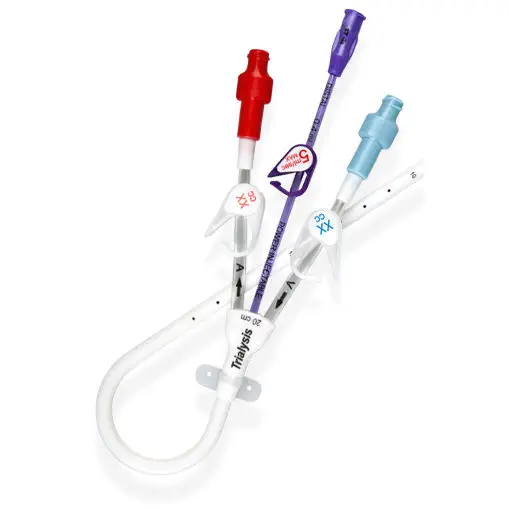IV and Lines
- related: Medicine, ICU intensive care unit
- tags: #literature #icu
- sizes in french and gauge
- large bore IV is better than central line for resuscitation
- introducer, mac, cordis can be used for resuscitation
IV Infusion
- IV infusion can be done via 2 ways
- gravity with roller clamp, dial-a-flow
- infusion pump
roller clamp:

dial-a-flow:

Central Lines
- Non-tunneled catheter: usually what we think as central lines. E.g. triple lumen. The line comes out of skin where it is inserted.
- Tunneled catheter: passes under the skin with separate exit site, usually the chest. Tunneling helps prevent infection and improves stability
- Cuffed catheter: cuff that allows skin to grow around it
- Triple Lumen: usually non tunneled three lumen catheter. Usually has one 16G and two 18G. Usually 7 French.
- Vas cath: aka HD cath, large diameter catheters, up to 16 French, allow flow rate 200-300 cc/min, usually has 2 lumen, one for blood coming out and one for blood returning to patient
- PICC: smaller diameter and longer than CVC. Unsuitable for rapid, large fluid.
- Tunneled cuffed central lines: used for long term access (weeks to months) such as chemo, nutrition, fluid. E.g. PowerlIne.
Contrast Injection for Imaging
- For contrast injection, the line must be able to withstand high flow rate of up to 5 cc/s or 300cc/min
- PIV: Ideally 20G or larger. IJ or EJ IV should not be used
- PICC: will be marked “power injectable”
- Chest Port: Usually power injectable
- Central line: usually can be used for contrast injection
- Arrowgard Blue is pressure injectable with max ml/sec marked on catheter
- Dialysis catheter: cannot be used for power inject except BARD Trialysis catheter (vas cath with pigtail).
